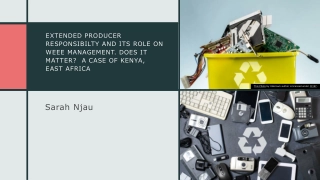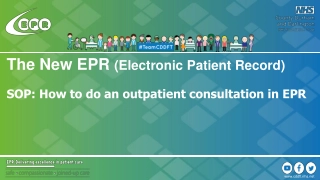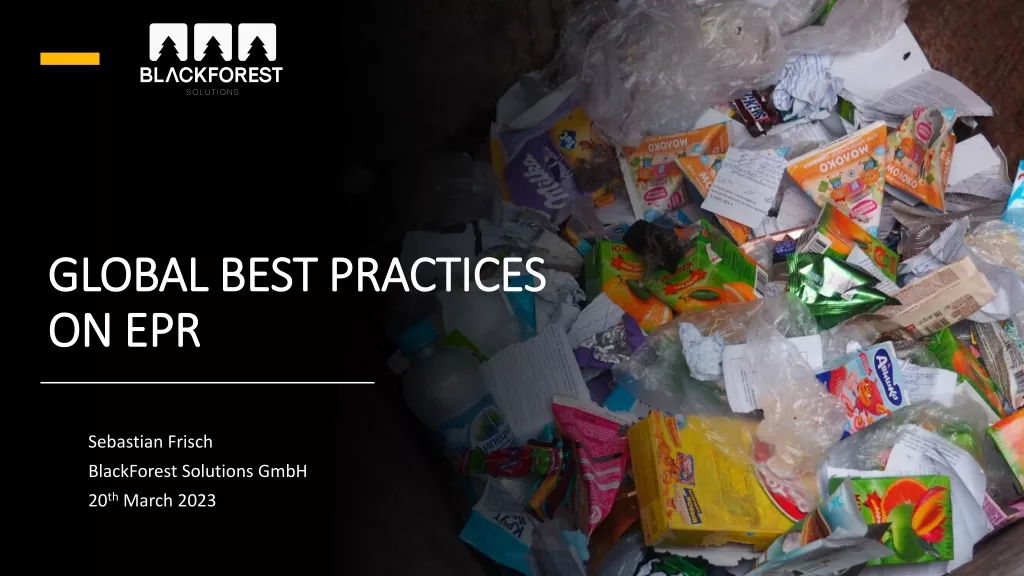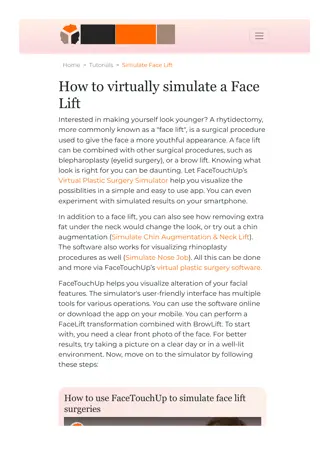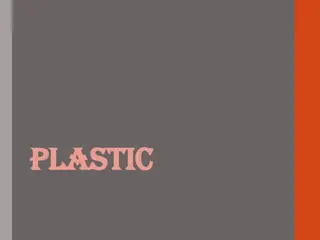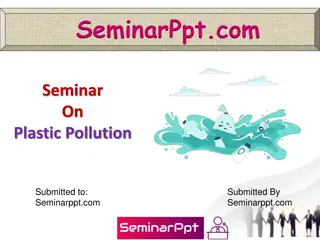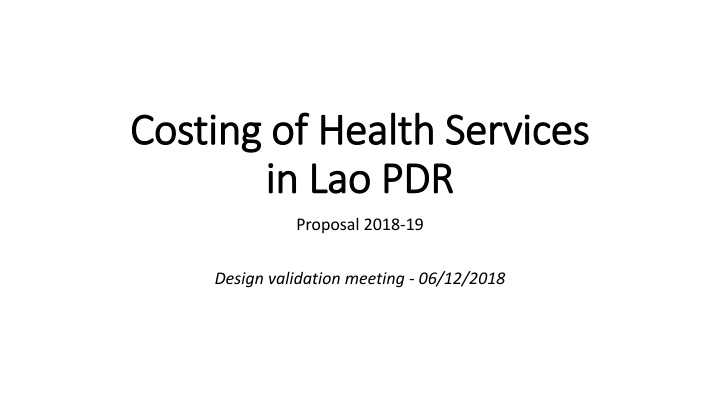
EPR in Nigeria: Addressing Plastic Pollution Challenges
The National Environmental Standards and Regulations Enforcement Agency (NESREA) in Nigeria is spearheading initiatives to enhance Extended Producer Responsibility (EPR) for plastic circularity. Through stakeholder collaboration, regulatory frameworks, and sustainable practices, NESREA aims to mitigate plastic waste generation and promote a circular economy. This presentation highlights the importance of EPR in combating plastic pollution and fostering environmental sustainability in Nigeria.
Download Presentation

Please find below an Image/Link to download the presentation.
The content on the website is provided AS IS for your information and personal use only. It may not be sold, licensed, or shared on other websites without obtaining consent from the author. If you encounter any issues during the download, it is possible that the publisher has removed the file from their server.
You are allowed to download the files provided on this website for personal or commercial use, subject to the condition that they are used lawfully. All files are the property of their respective owners.
The content on the website is provided AS IS for your information and personal use only. It may not be sold, licensed, or shared on other websites without obtaining consent from the author.
E N D
Presentation Transcript
Costing of Health Services Costing of Health Services in Lao PDR in Lao PDR Proposal 2018-19 Design validation meeting - 06/12/2018
Agenda A. Introduction B. Costing design (Objective, Methodology, Budget, Funding) C. Current progress D. Next steps
A. Introduction Why do we need to do costing for health care service? In the health system, health needs are unlimited, but public health resources are always limited. So, we could not cover all needs of population on health care services We must select only the necessary needs on health care services, which one should be covered and should not be covered: - we must prioritize the needs of health care; - we must know how much its cost for those needs - we must know which needs could we fund Therefore, the costing is a basic need of all health care services.
Why do we need to do costing for health care service? Why do we need to do costing for health care service? : 100% ; , , . 4
B. Costing Design B. Costing Design 1. Objectives & Scope 2. Methodology 3. Budget 4. Funding
1. Objectives & scope of the costing exercises 1. Objectives & scope of the costing exercises Objectives: Provide sound evidence basis to: 1. Set the providers payment rates for the Health Insurance benefit package for FY2019/20 2. Prioritize, scale-up of new interventions and ensure minimum funding of the 121 interventions of the Essential Health Service Package 3. Define the adequate funding channels: what to be funded by the government budget, by the Health Insurance and by facility revenues after FY2020 4. Define the full health facility cost and revenues information in the decision- making around hospital autonomy 5. Set up the benchmark user charges & potential HI contributions for health services in public health facilities (outside HIBP) & for private health facilities + Advocate for adequate funding with Government/DPs + Prepare of the 5y NHSDP 2021-25
Scope of the costing exercises Scope of the costing exercises # Dimension Health Insurance Benefit Package (HIBP) / Health Facility (HF) Purchaser (cost incurred to cover a service) Public health facilities + 2 private hospitals Essential Health Service Package (EHSP) Provider (cost incurred to deliver service) Only public health facilities Service (for individual service or a package of services provided) 1 Perspective 2 Provider type 3 Cost object HIBP Service (for individual service or a package of services) HF Organization (for each facility level) Financial cost Avg cost by service category (Total HIBP cost) 4 Cost type Financial cost Financial cost 5 Cost measure Health facility cost by facility level (total, marginal & fixed costs at zero utilization) Average cost by intervention Total cost of the EHSP 6 Cost item Recurrent cost Personnel (incl incentives needs) Drugs & medical supplies Utilities Other recurrent costs (Depreciation) Recurrent cost Personnel (incl incentives needs) Drugs & medical supplies Utilities Other recurrent costs Maintenance ( & Depreciation) Capital cost Building Medical equipment Non-medical equipment -> Full cost incurred at facility Recurrent cost Personnel cost by intervention (hours) or total staff costs by program Non-staff recurrent cost (drugs & medical supplies) Capital cost equipment directly linked Programmatic cost by program (summary total) -> Direct costs + summary full cost
Scope of the costing exercises Scope of the costing exercises # Costing Main output Cost category Type of cost categories 1 Health Insurance Benefit package (HIBP) Average cost by category of service (Total HIBP cost) Full costs Human resources Pharmaceuticals, supplies Administration & management (Equipment) (Infrastructure) Cost by facility level (total, marginal and fixed cost at zero utilization) Health Facility Costing (HF) Full, marginal & fixed costs 2 Essential Health Service package (EHSP) Average cost by intervention Total cost of the ESP package Direct costs Pharmaceuticals, supplies Equipment directly linked Full costs summary Human resources by intervention (hours) or total staff costs by program Programmatic costs by program (summary total)
Key questions # Costing package Health Insurance Benefit package (HIBP) Questions (direct & indirect) How much does outpatient department cost (by level)? How much does each intervention/pathology cost? (40 tracers -> ~17-28 categories) How much different to current NHIB per capita and case-based payment rate? How much should the NHIB pay for per capita, and each category? (How much would the total HIBP cost?) (Which categories should be prioritized?) (How much should a patient have to pay for services that are outside HIBP?) 1 Health Facility Costing (HF) How much does public health facility cost (by each level, by cost item)? How should public health facilities be funded? Specifically, which expenditure categories should be funded by what? (by NHIB/NSSF reimbursement, budget allocation, and user fees)? How much does each intervention cost? (121 interventions) How much would the total EHSP cost? (Which interventions can the government afford?) (Which interventions should be prioritized?) 2 Essential Health Service package (EHSP)
2. Methodology 2.1. Principles: Synergies for the three costing exercises Mix of methodologies: Top-down stepdown costing: (HF, HIBP), Bottom-up costing: (HIBP admissions, some EHSP interventions), Normative costing from International and Lao standards (HIBP, EHSP) Activity based costing (part of EHSP interventions) Uniform services costed: Same cost for all patients/users (NSSF members, NHI paying or not, OOP) By level of health service providers CH, Spec. Inst., RH, PH, DHA, DHB, HC, (Outreach, Community) Various collection sources: Specific costing team, Hospital reported to MOH/DOF, national programs, specialists team, international literature
2. Methodology 2.2. Steps: # Costing Average cost by category/intervention Total cost Methodology Stepdown Bottom-up Normative Tools (e.g.) Methodology Utilization from DHIS2, HI, Nat. Prog. Projections utilization Tools (e.g.) Excel or OHT 1 Health Insurance Benefit package (HIBP) Excel (info <OHT) Stepdown Zero-utilization Health Facility Costing (HF) Excel OHT and/or HSPT or Excel Excel Normative (all) Bottom-up (some) 2 Essential Health Service package (EHSP) OHT or Excel 5y HSD Plan 2020-21
2. Methodology 2.2. Details: Service Delivery sample: HIBP/HF: 3 CH, 5 Spec. Inst, 2 Pvt H, 3 RH, 4 PH, 10 DH (3A-7B), 20 HC => 47 Facilities ESP: + Outreach sessions & community events Service categories/interventions to be costed HIBP: current 7 categories (15 pathologies) + 10-22 new categories (25 pathologies) => 40 pathologies/interventions to be costed ESP: 16 interventions = HIBP service categories, 15 nodirect cost => 90 interventions => Total : 130 pathologies/interventions Stepdown costing in each 47 HF CH/RH 12 days, PH/Pvte 10 days, DHA 6 days, DHB 4 days x , HC 2 days Costing team: 5 Teams of 7 people (35 people) + facility staff
2. Methodology Bottom-up costing HIBP: 30 patient files for 40 tracers pathologies/interventions ESP: 17 additional interventions Compare with data collected from hospitals by DOF Normative costing For all 40 HIBP service categories & all 106 EHSP interventions (~15 no cost, 15 same) Int l standards: from OHT and other standard estimates Lao standards: defined by a team of 3-4 specialists from CH/PH for each pathologies/intervention EHSP interventions to be costing by national programs Activity-based costing EHSP: very limited (2-5 interventions) Zero-utilization health facility costing HF: normatively estimate health facility zero-utilization cost by each level per day / year
Data source Intervention Package (output) Approach Health Facility Total health facility cost Top-down 45 health facilities CH / Spec. inst. RH, PH, DH, HC Outreach 24 24: bottom-up 24: normative Bottom-up HIBP Average cost by pathology/intervention (Total cost of HIBP) 16 DOF report Activity-based 16: bottom-up 16: normative National programs 90 EHSP 7: bottom-up 2-5: Activity-based 90: normative Normative (clinical pathway) Average cost by pathology/intervention Total ESP cost Clinical specialists Among 90 EHSP interventions, Around 52 are still covered by HIBP (as part of the NHI payment)
2. Methodology 2.3. Costing Team: Core costing team: LTPHI, DOF, NHIB, NSSF (25-30 people) assisted by students for central level Providers of information: National MOH programs/dep ts: DHC, FDD, DPIC, DHP, MCHC, HIV, TB, (1-2p/prog) Technical teams of specialists from hospitals (3-4p for each speciality) Technical support: External consultant team to accompany the process during the whole process: For HIBP & HF: ~138 days => Firm/Institute with 1 senior & 3 junior for field data monitoring For ESP specific: ~65 days (Intl) + 40 days (Lao) => Indiv. consultants to accompany the process Technical assistance at various stages of the costing: SRC, ILO, WHO, FHF, WB
2.3. Costing Team 2.3. Costing Team Team Organization Support to Entire costing process Top-down (HIBP/HF) Bottom-up (HIBP/HF) Joint costing exercise committee Top-down / Bottom- up Costing Team 7~10 people o MOH/NHIB, LTPHI, NSSF, MOH/DOF, MOH/DHC, MOH/MCHC, MOH/MPSC, 28 people (4 teams of 7 people) assisted by students for data collection at central level + facility staffs o LTPHI, NHIB, NSFF, MOH/DOF, MOH/MCHC ~14 persons (1-2 person per program) o MOH/DHC, MOH/DFD,MOH/DPIC, MOH/MCHC, MOH National Programs (HIV/STI, TB, Malaria, etc..) ~26 persons (2-4 persons for each specialty) o Obstetrics and gynecology, Pediatrics, Internal medicine, Ear, Nose and Throat (ENT), Dentistry, Ophthalmology, General surgery, Cardiology, Oncology, Others External consultants International consultant/s o For HIBP/HF: A team of at least 1 senior & 3 junior consultants or an institute to focus on overall design, monitoring, and reporting including (~138 days) o For ESP: 1 or several individual consultants (~65 days) / Lao consultant (~40 days) Development partners o Financial: ILO, WHO, SRC, WB, FHF, UNFPA, JICA, LUXDEV o Technical: ILO, WHO, SRC, WB, FHF MOH Departments / National Programs Normative (EHSP) Activity-based Costing (EHSP) Normative (EHSP) Clinical specialists Assist some parts of the costing process Financial and relevant TA supports from: Assist the whole costing process
2. Methodology 2.4. Timing: Process: around 10 months Period: 10/2018-07/2019 Planning # Initial Budget estimates Sep-18 Oct-18 Nov-18 Dec-18 Jan-19 Feb-19 Mar-19 Apr-19 May-19 Jun-19 Jul-19 1 Design 2 Equipment data collection 3 Data collection 4 Monitoring 5 Data recording & analysis 6 Reporting 7 Dissemination
3. Budget estimates HIBP/HF ESP Initial budget estimates Committee TD-BU team 102,428 104,652 $189,982 Consultant (Int) Committee National Prog. Spec. Team Consultant (Int)Consultant (Lao) TA from DPs - 3,162 - - 2,424 23,882 - - - 5,824 - 6,412 - - 2,424 39,279 $68,155 Total 1 Design 2 Equipment data collection 3 Data collection 4 Monitoring (of teams) 5 Data recording & analysis 6 Reporting 7 Dissemination - - - - 5,324 6,412 - - - - 17,000 7,000 21,897 2,224 143,279 33,381 41,329 20,556 12,471 275,136 2,224 - - - - - - 4,518 30,732 27,282 5,074 3,851 6,176 2,166 1,412 2,588 6,235 12,401 - - - - 483 - - - - - - 1,812 776 5,000 5,000 706 6,235 13,836 - - - 72,929 3,851 8,765 TOTAL
4. Funding for the costing From Government: Regular budget chap. 63: MOH DOF, involved Dep ts Budget from NSSF and NHIB DLIs 2018/19 From DPs: ILO: Consultants HIBP-HF (excl HC), operations HIBP-HF, TA WB: Consultants EHSP + HIBP-HF (HC), TA FHF: Operations HIBP-HF, TA WHO: Operations mainly EHSP, TA SRC: Operations HIBP-HF/EHSP, TA, Coordination UNFPA: Operations HIBP-HF/EHSP (preparation meeting) JICA: Operations HIBP-HF (transport) LuxDev: Consultants HF, Operations HF + EHSP 35,000$ 230,000$ 55,000$ + TA Marielle mission + Nat. 50,000$ + TA Emi 50,000$ + TA Debbie mission & remote 30,000$ + TA Christopher & Khek 6,000$ + TA JMT, Daniel & data coll. 14,000$ (before 12/2018!) 5,000$ (before end 02/2019!) 20,000$ + TA ~22,500$
C. Progress to date C. Progress to date Costing proposal / roadmap drafted Proposal presented, revised and technically agreed (8 meetings) Main funding arrangements agreed by MOH/NHIB and DPs MOH nomination of the costing team (Decree) Recruitment process for consultants started Costing HF data collection with Xaymongkhon private hospital done
D. Next steps D. Next steps Stage Activities Who? When? Design Disseminate the list of costing members Finalize the recruitment of consultants Finalize the detailed methodology Contract arrangements Draft the questionnaire for stepdown/bottom-up costing Choice of tool and questionnaire for the normative costing Approval by the Costing Steering Committee Training of data collectors Test in health facility Revise the questionnaires Data collection in facilities Data collection normative costing with specialists and programs Monitoring of data collection Data recording (Excel for HIBP/HF; Excel/OHT? for EHSP Cleaning & analysis Integration of other data (DOF list of fees charges, Nat. Prog data,..) Reporting for each of the 3 costing exercises Compilation (links between data, policy analysis, recommendations) Dissemination Utilization of findings EHSP, HF, HIBP Data collection Analysis Reporting Dissemination Utilization


